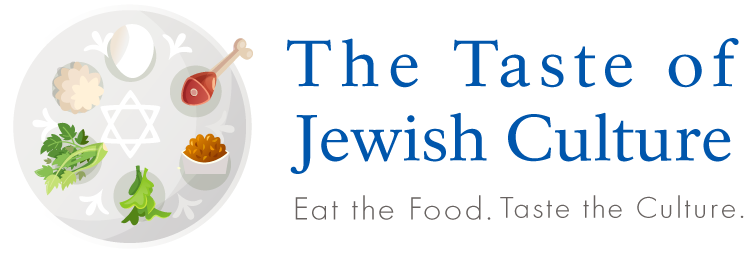When I give my tours in Jerusalem’s open-air Machane Yehuda Market, I say something in my intro that sometimes confuses my guests. In discussing the diversity of foods that we encounter in the market, I explain there are foods from Ashkenazi Jews, Sephardi Jews, and “Jews who are neither.” Usually, I get quizzical looks from those who can’t envision Jews who fit anything but one of those two categories. Occasionally, particularly from people more familiar with Israeli culture, I get someone who says, “ah, you mean Mizrachi Jews!” And then I explain that I mean Jews (and thus also Jewish foods) who don’t match that category either.
So before I get into some examples and explanations, let me first break down those categories.
Grouping Jews Together

A different breakdown is by geographic region of origin. But even that terminology is innaccurate: the region of “origin” for all Jews is Israel, our ancestral homeland. So by “origin” we really are referencing our stopping points at certain points through history. As Jews spread throughout the world, three specific areas became larger hubs of Jewish life. First Mesopotamia (known as Bavel (Babylonia) in Jewish culture) was the dominant region, from about the fourth through the tenth centuries. As it began to decline in prominence, two other hubs in Western Europe took its place. Ashkenaz was a medieval term applied to the border region that straddled northeastern France (Alsace, Lorraine, and Champagne) and western Germany (the Rhineland). Sepharad was the name assigned to Spain.
So nowadays, when we use the terms Ashkenazi and Sephardi, we mean that one’s ancestors trace back to medieval France/Germany or Spain. The common Israeli term Mizrachi means that one’s ancestors were more connected to the earlier hub in Bavel than either of those later two regions. Central and Eastern Europe’s Jews were primarily Ashkenazic, those of Southern Europe were mostly Sephardic. North Africa was largely a mix of Mizrachi and Sephardic Jews, while Western Europe mixed Ashkenazi and Sephardi descendants. And the Middle East largely housed Mizrachi Jews, but there were also some Sephardic Jews who entered the mix.
These three cultures, and their respective cuisines, were something I tried to subtly suggest in the image i use on my business cards — the image you see accompanying this section. At the top, the bagel represents Ashkenazi food in the north. The bourekas on the bottom are for Sephardi food in the south. And the dates are for eastern Mizrachi foods (the word Mizrachi, by the way, actually means “eastern”).
Finally, numbers have power. In America, as I’ve highlighted many times, Ashkenazim are hugely dominant culture. Thus everybody else has gotten lumped together under the term “Sephardi,” even when they are not Sephardim at all! An Iraqi Jew, for example, has zero connection to Spain. So why should we refer to her as a Spaniard (the literal definition of Sephardi)? It’s just that there are such relatively few non-Ashkenazim, that many of the more subtle breakdowns were ignored. Sephardi has come to mean “not Ashkenazi,” rather than it true definition, Spanish. Why did Sephardi become the catch-all term, instead of Mizrachi or something else? Probably because they were the second largest group, numerically.
When one looks at the foods of Jews from different regions, however, we see that there are stark differences. A Sephardic Jewish diet from the island of Rhodes will differ drastically from a Mizrachi one found among the Jews of Afghanistan.
Beyond Ashkenazi and Sephardi (and MIzrachi)

Jews have been living in Italy since at least the first century BCE, long before either of the medieval European hubs began, and also before the real rise of Bavel to prominence. That continuous Jewish community thus can not really be called by any of the three previous categories. And they have many unique foods that underscore this individuality. Leah Koenig’s upcoming book Portico highlights the foods of Roman Jews, specifically, a community that was not overrun by Sephardic immigrants (cities in Italy’s north absorbed much larger numbers of Spanish Jews, following the 1492 Expulsion). Thus, their foods reflect a different heritage, largely that of the Italki community.
The fried artichoke pictured here is one of their classic foods, called carciofi alla giudia — Jewish style artichokes. I am not suggesting that this was something that Italian Jews ate 2000 years ago. (Deep frying is a more modern cooking method, anyway.) But I am saying that you can’t call this uniquely Jewish food either Ashkenazic, Sephardic, or Mizrachi.
There are many more such communities. Just as there were early Jews in Italy, there also were similar communities in Greece and Turkey, typically referred to as Romaniote Jews. In Turkey, Sephardi immigrants came to completely dominate the locals, so pre-Sephardic food culture has largely been lost. But the people certainly exist still, and any special foods they eat do not belong to the Big Three categories. We do find somewhat greater remnants in Greece, though there we have the problem of the community’s massive losses during the Holocaust. Still a good source for that is Nicholas Stavroulakis’ wonderful work on Greek Jewish food.
What about Yemenite Jews? They are a bit more complicated. They did have some connection to the Mesopotamian community, but as strong as some others, and not continually throughout their history. So maybe we can call their food quasi-Mizrachi. (And in fact, some of their foods are shared by Iraqi Jews, others are completely unique to them.) Ethiopian Jews, and the Bene Israel Jews of northwestern India remained fairly isolated throughout history. Their foods are completely distinct of the influences of the three main categories.
Georgian Jews and their neighbors, the Mountain Jews, were not that far from Mesopotamia, geographically, but also were not really in significant contact with that hub. So they too belong to none of the major categories, as their distinct foods attest.
So Where Does That Leave Us?
In brief, the foods of the Jews from around the world are endlessly diverse, reflecting our people’s intense diversity. Putting people into boxes is inherently inaccurate (the foods of different parts of Ashkenazi society are very distinct, as are the foods of Sephardic Jews from different regions). So it is bad enough when we rely on two (or even three) massive labels. But when we go so far as to believe that all Jews can be encompassed by two or three categories, we are erasing huge parts of our incredible history as well.
Our diverse foods indicate the incredible diversity of our people. When I tell someone that Georgian Jews are not Ashkenazi, Sephardi, or Mizrachi, I often get the response, “So what are they?” The answer very simply is: they are Georgian Jews. Either we should just refer to all Jews simply as “Jews” or we should get specific about where they all come from, even differentiating within the big categories. And the same, of course holds true for all of the individual foods that each independant community of Jews enjoys.







What is Bukharian Food? - Taste of Jewish Culture
[…] on how one defines their terms, Bukharian Jews may or may not be considered Mizrachi Jews. As I’ve written previously, the terms Ashkenazi and Sephardi reference Jews who in the Middle Ages lived, respectively, in […]
From the Bookshelf: The Book of Jewish Food - Taste of Jewish Culture
[…] Roden also does something else that bothers me, by dividing the Jewish world into a largely binary thing: Ashkenazi and Sephardi. Admittedly, she recognizes this as the oversimplification it is, but I’d still prefer to […]
What is T'bit? - Taste of Jewish Culture
[…] Mizrachi. (As you may know, however, one of my pet peaves is that even these three categories do not sufficiently categorize all Jewish communities, and I’d much rather we don’t try to separate our people by just putting them into […]